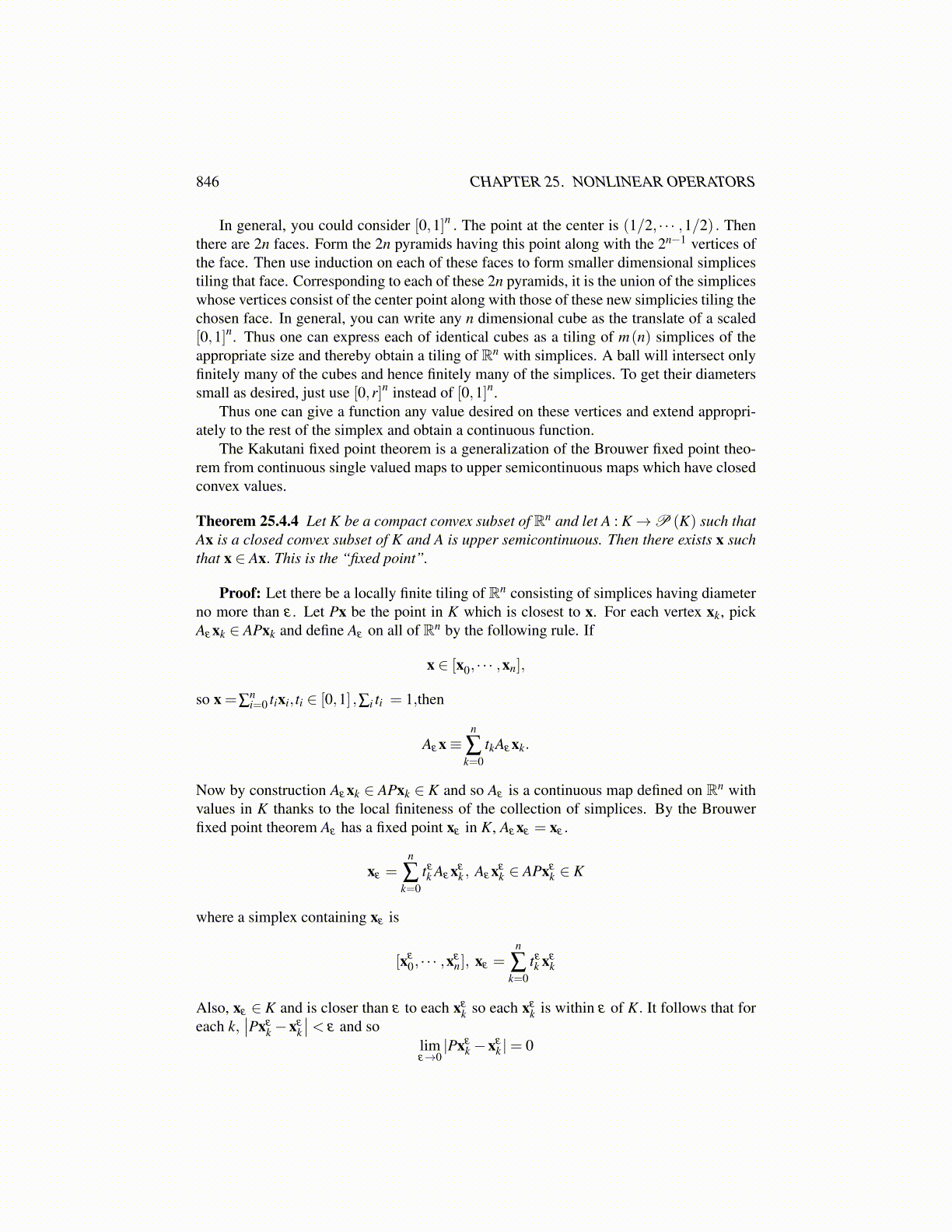
846 CHAPTER 25. NONLINEAR OPERATORS
In general, you could consider [0,1]n . The point at the center is (1/2, · · · ,1/2) . Thenthere are 2n faces. Form the 2n pyramids having this point along with the 2n−1 vertices ofthe face. Then use induction on each of these faces to form smaller dimensional simplicestiling that face. Corresponding to each of these 2n pyramids, it is the union of the simpliceswhose vertices consist of the center point along with those of these new simplicies tiling thechosen face. In general, you can write any n dimensional cube as the translate of a scaled[0,1]n. Thus one can express each of identical cubes as a tiling of m(n) simplices of theappropriate size and thereby obtain a tiling of Rn with simplices. A ball will intersect onlyfinitely many of the cubes and hence finitely many of the simplices. To get their diameterssmall as desired, just use [0,r]n instead of [0,1]n.
Thus one can give a function any value desired on these vertices and extend appropri-ately to the rest of the simplex and obtain a continuous function.
The Kakutani fixed point theorem is a generalization of the Brouwer fixed point theo-rem from continuous single valued maps to upper semicontinuous maps which have closedconvex values.
Theorem 25.4.4 Let K be a compact convex subset of Rn and let A : K→P (K) such thatAx is a closed convex subset of K and A is upper semicontinuous. Then there exists x suchthat x ∈ Ax. This is the “fixed point”.
Proof: Let there be a locally finite tiling of Rn consisting of simplices having diameterno more than ε . Let Px be the point in K which is closest to x. For each vertex xk, pickAε xk ∈ APxk and define Aε on all of Rn by the following rule. If
x ∈ [x0, · · · ,xn],
so x =∑ni=0 tixi, ti ∈ [0,1] ,∑i ti = 1,then
Aε x≡n
∑k=0
tkAε xk.
Now by construction Aε xk ∈ APxk ∈ K and so Aε is a continuous map defined on Rn withvalues in K thanks to the local finiteness of the collection of simplices. By the Brouwerfixed point theorem Aε has a fixed point xε in K, Aε xε = xε .
xε =n
∑k=0
tεk Aε xε
k , Aε xεk ∈ APxε
k ∈ K
where a simplex containing xε is
[xε
0, · · · ,xεn], xε =
n
∑k=0
tεk xε
k
Also, xε ∈ K and is closer than ε to each xεk so each xε
k is within ε of K. It follows that foreach k,
∣∣Pxεk −xε
k
∣∣< ε and solimε→0|Pxε
k −xεk |= 0